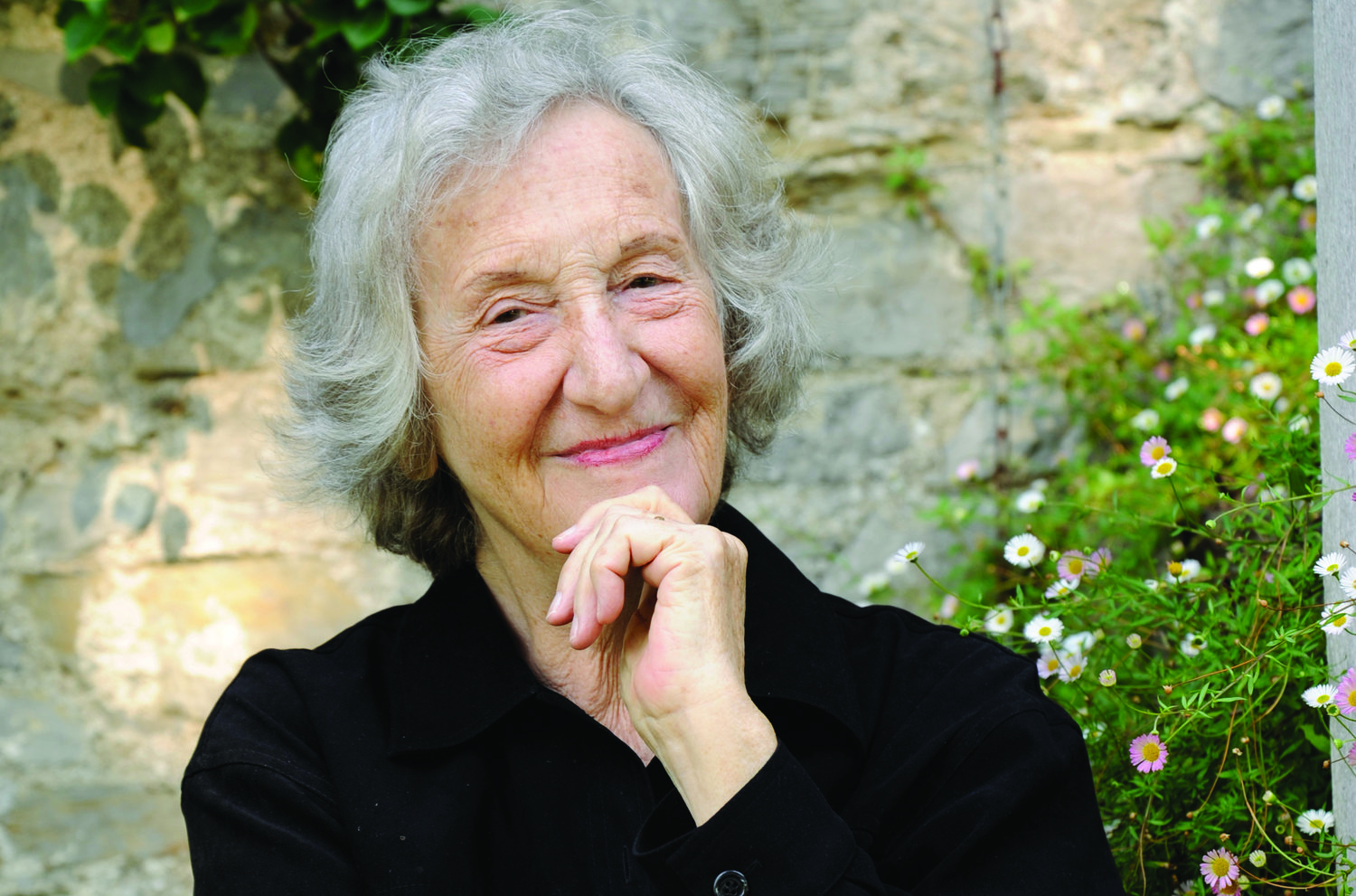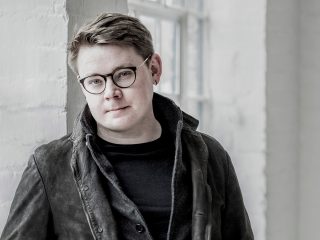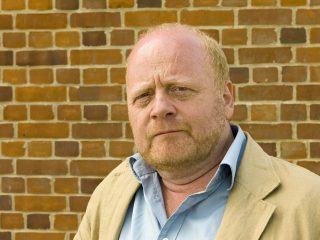
Thea Musgrave
This year sees Thea Musgrave celebrate her 90th birthday and with it she has recently been awarded the Queen’s Medal for Music. It is hard to encapsulate what an incredible amount of variety and fantastic quality Thea Musgrave has brought to the Oboe repertoire. The sheer number of works explored in this journal entry should help show what an valuable contribution she has made to so many areas of the repertoire.
Dawn
Instrumentation: Solo Oboe
Duration: 1′
Premiere: 2012. Nicholas Daniel, King’s Place, London
This short work was written to celebrate an important birthday of Nicholas Daniel. It starts in a languorous Eb major and travels to a joyous A major sunlight.
© Thea Musgrave
Take Two Oboes
Instrumentation: 2 Oboes
Duration: 5′
Premiere: 2008, Nicholas Daniel and Rosie Jenkins at The Sage, Gateshead, UK.
Thea Musgrave decided to write some pieces for pairs of instruments, partly for use in teaching and partly for the fun of hearing two of the same instruments performing together as they do in Mozart or Haydn Symphonies.
She asked me for some tricky technical challenges that one might be asking students to work on that could be difficult to have in a solo piece.
The specifics I suggested are for the fingers: the intervals D flat to E flat to E natural because of the coordination of the right hand fourth finger and left hand little finger, also the change from B flat to B natural, because of left hand little finger manipulation (although some oboe fingering systems call for left hand thumb and third finger).
An additional technical issue is the realisation of a low B flat. It is famously recalcitrant to control but wonderfully sonorous when one does. Thea uses it to great effect in her Oboe and Percussion Concerto, ‘Two’s Company’ which she wrote for Evelyn Glennie and myself.
I also asked Thea to share the melodic lines in order to enable the student and teacher to work towards matching sound quality and I specifically asked her to write high up in the register to force teh practising of top note fingerings at all dynamics but particularly piano and cantabile.
There is nothing of this quality writen for duet in this way and that makes these delighteful pieces unique.
© Nicholas Daniel
Cantilena
Instrumentation: Oboe and String Trio
Duration: 10′
Premiere: 2008, Nicholas Daniel and the Chilingirian Quartet. Commissioned by the London Chamber Music Society to celebrate their move to King’s Place in October 2008.
The work is a short, lyrical piece where an outsider [the oboe] joins the group [a string trio] and adds to their dialogue. At first the newcomer is treated with a mixture of suspicion and agitation, but eventually is made welcome.
The oboe is invited to share the musical theme that has been established which he then proceeds to embellish and adorn. He leads the harmonic changes that result in the theme being heard in many different keys. He then introduces a new theme. The excitement grows and leads to a climax.
A peaceful coda re-establishes the original theme and all ends harmoniously among the integrated quartet.
© Thea Musgrave
Night Windows
Instrumentation: Oboe and Piano. Also available for Oboe and 15 Strings.
Duration: 13′
Premiere: 2009, Nicholas Daniel and commissioned by International Double Reed Society. Oboe & Strings version completed in 2016 for performance in November 2018
Walking down a darkened street it’s hard to resist looking in through lighted windows and catching a glimpse of other people’s lives. The imagination lingers…
Night Windows is the title of a painting by Edward Hopper of a scene in one such lighted window. However the scenes in this work – though reflecting something of all the loneliness in so many of the Hopper paintings – are all imaginary: highly charged emotional moments.
Loneliness: Anger: Nostalgia: Despair: Frenzy.
The work was commissioned by the International Double Reed Society and it is dedicated to Nicholas Daniel.
© Thea Musgrave
Two’s Company
Instrumentation: Oboe and Perussion with Orchestra
Duration: 21′
Premiere: 31 August 2007, Nicholas Daniel and Dame Evelyn Glennie with the BBC Symphony Orchestra (conducted by Jiri Belohlavek)
This work was commissioned by the BBC for Evelyn Glennie and Nicholas Daniel. It was an exciting challenge to write a dramatic work for two such dissimilar instruments. I decided that I would strongly dramatize this difference before bringing them harmoniously together. Thus at the beginning of the work the two soloists are standing as far apart from each other as possible: the percussion downstage left, behind the celli, and the oboe off stage right. For each of the four ensuing sections the soloists move around the orchestra to different positions and these changes are always dramatically motivated. Throughout the two soloists are aware of each other and play with each other’s attention, but only come together musically and physically in the very last section.
The slow first section is marked Desolate, lonely: When the oboe first enters he responds initially to the cor anglais, and then later to a solo clarinet. This encourages him to go on stage and take a position near his fellow woodwinds which precipitates the second movement. The solo percussion, hoping to attract the oboe’s attention moves to the vibraphone which is set closer at hand.
The second section, Frivolous, playful is a jaunty scherzo, mostly in 5/4 rhythm, and for a time it seems that the oboe responds favourably to the percussion, but then the horns attract his attention and he eventually moves so as to be close to them and the harp.
In frustration the solo percussion moves to the drums [congas, tomtoms and bongos]. The third section Dramatic: furioso/espressivo is a series of confrontations. Aggressive music for the percussion [supported by strings and brass] alternates with an expressive solo oboe [accompanied by horns and harp]. These alternations come closer and closer together ending in a big climax. The oboe finally turns to the percussion and “invites” her to listen. The percussion responds and so sets the scene for both soloists to come down stage center and bonding for the final section: Warm leading to Passionate and finally Exultant a whirling coda.
© Thea Musgrave
Threnody
Instrumentation: Cor Anglais and Piano
Duration: 8′
Premiere: 1997 in Clarinet version by Victoria Soames-Samek & Nicholas Daniel in 2006.
This work is about the powerful emotions engendered by loss. The famous medieval chant “Dies Irae” about the Day of Judgement is used as a foundation of the work. This chant is incorporated into a series of chords played extremely slowly by the piano (these chords are actually taken from the composer’s setting of a poem by Georg Trakl in her Wild Winter): thus the three sections of Threnody correspond to the three lines of one verse of the medieval chant.
In the first section the chords are loud and implacable and interspersed with a misty figure that rises like incense in a great gothic cathedral. The clarinet, the “mourner”, decorates the texture with an impassioned recitative.
In the second section grief erupts into turmoil and anger and this mood is echoed in the piano.
Eventually the music calms and the third section becomes a lament. This in turn merges into a coda where a quiet tolling bell-like figure in the piano and a softly rising scale in the clarinet suggest that the mourner has found peace.
The work was written in response to a request from Victoria Soames to commemorate the passing of her teacher, Roger Fallows.
© Thea Musgrave
Helios
Instrumentation: Oboe and Orchestra
Duration: 17′
Premiere: 1995, Nicholas Daniel with Scottish Chamber Orchestra (conducted by Nicholas Kraemer)
Commissioned by the St Magnus Festival, Orkney, with funds from the Scottish Arts Council. First performance 17th June 1995. Scottish Chamber Orchestra conducted by Nicholas Kraemer, solo oboe Nicholas Daniel.
Helios, as described in the ancient Greek myth, is the god of the sun. Each day he drives his chariot across the heavens to the far west where his horses pasture in the islands of the Blessed. He then embarks with his horses on to a raft and sails home along the ocean stream which circles the globe.
Helios has some close parallels with Greek myth. The seating of the orchestra is such that visually the solo oboe stands at the helm of his ‘chariot’ while the horses are represented by a group of ‘concertante’ players (four woodwinds, two horns and one trumpet) and when these players stand at the climax of the work, the shape of the chariot is even more evident. The ‘concertante’ playing is also audible because of the virtuosic nature of the soloistic writing for them.
In response to the challenge of integrating musical and dramatic ideas, it will be seen that in Helios there is a true interplay of soloists and tutti. Though the solo oboe is at all times the leader and energiser, he shares some of the musical virtuosity with the concertante players.
The music starts in darkness and the soloist gradually approaches and rouses the concertante players to a musical climax with a theme in thirds played by a pair of horns.
A scherzo follows where the soloist, playing a quasi improvisando against rustling strings, incites the other wind players to join him. The strings begin to overwhelm the musical texture, and in response the oboe ‘summon’ his concertante players and together they ride out the storm.
The storm subsides and a cadenza for oboe follows. A quiet coda includes a section where the woodwind imitate the rippling of the ‘ocean stream’ as Helios completes his journey round the world. The Concerto ends very quietly with the oboe playing in its highest register.
© Thea Musgrave
Wind Quintet
Instrumentation: Wind Quintet
Duration: 10′
Premiere:First performed by the Orpheus Wind Quintet on March 19, 1993 at Brigham Young University, Provo, Utah. Commissioned by the Barlow Endowment for Music Composition at Brigham Young University.
In this work the five instrumentalists, alternating between soloistic and accompaniamental roles, enact a kind of mini-drama without plot. The players are therefore asked to play throughout with the kind of freedom of expression that is found in opera.
There is one single movement with four sections:
1. Andanate espressivo: con molto rubato. Out of a quiet unison note (E), the flute emerges as a lyrical, expressive voice. Shortly the oboe with increasing agitation begins to challenge this mood. The horn becomes increasingly restless.
2. Più mosso: drammatico. The horn finally interrupts with a dramatic solo. Against this, the bassoon, and then the clarinet introduce an even faster tempo (a kind of moto perpetuo) which leasd eventually to a wild, anarchic cadenza, the climax of the piece (con passione).
3. Mesto: elegiaco. When the cadenza dies away, the bassoon sets a slow elegiac mood, accompanied by a simple chordal motif.
4. Andante espressivo. A return of the opening section, where both flute and clarinet now share the slow expressive theme. But this lyricism is not allowed to be re-established for long; the oboe again begins to intrude with increasing agitation, only to be fiercely interrupted by the horn who reintroduces the ‘chordal motif’ as well as a brief memory of the earlier moto perpetuo. The same ‘chordal motif’ eventually leads to a soft tolling cadence.
© Thea Musgrave
Niobe
Instrumentation: Oboe and Tape
Duration: 10′
Premiere: 1988 by Ian Hardwick in Purcell Room, London. Commissioned by Park Lane Group.
Niobe, written in July and November 1987, was commissioned by the Park Lane Group for Ian Hardwick. The Tape was made in the Chiens Interdits Studios in New York; recording engineer, Jonathan Mann.
In Greek mythology, Niobe was the daughter of Tantalus and wife of Amphion, King of Thebes. She unwisely boasted to Leto about her many sons and daughters. Leto, who only had two children, Apollo and Artemis, was angered.
As punishment Apollo slew all of Niobe’s sons and Artemis all her daughters.
Out of pity for Niobe’s inconsolable grief, the Gods changed her into a rock, in which form she continued to weep.
In this short work for solo oboe and Tape, the solo oboe takes the part of Niobe bitterly lamenting her murdered children. The tape with the distant high voices and the slow tolling bells, and later gong, is intended to provide an evocative and descriptive accompaniment.
© Thea Musgrave
Impromptu No.2
Instrumentation: Oboe, Flute & Clarinet
Duration: 9′
Premiere: 1970. Commissioned by the Department of Music, University College, Cardiff, in association with the Welsh Arts Council.
It was written in the summer of 1970 in Santa Barbara where the composer had been visiting professor in the University of California.
As implied by the title, the work is light-hearted and brilliant and it has been notated in such a way that it can be played with considerable rhythmic freedom.
Sandwiched between the opening section and the closely related coda where all three instruments are more or less equally balanced, comes Andante espressivo led by the flute, Drammatico led by the clarinet, and finally Leggiero & Fantastico where the oboe predominates.
© Thea Musgrave
Impromptu No. 1
Instrumentation: Oboe and Flute
Duration: 4′
Premiere: 1967 by Janet Craxton and Douglas Whittaker
Impromptu for flute and oboe was written in 1967. As the title implies it is a short light-hearted work. It is based on a short distinctive phrase heard at the outset. This returns many times at different pitches and always with a different continuation.
© Thea Musgrave
About Thea Musgrave
In culmination/honor of her distinguished and varied catalogue and career over 60 years, the BBC presented Total Immersion: Thea Musgrave with three concerts of her chamber, choral, and symphonic works performed and recorded at the Barbican in a single day — February 15, 2014.Known for the clarity of her invention, the skill of her orchestrations, and the power of her musical communication, Musgrave has consistently explored new means of projecting essentially dramatic situations in her music, frequently altering and extending the conventional boundaries of instrumental performance by physicalizing their musical and dramatic impact: both without programmatic content (such as the Clarinet Concerto, the Horn Concerto, the Viola Concerto, and Space Play), and others with specific programmatic ideas (such as the paintings in The Seasons and Turbulent Landscapes, the poems in Ring Out Wild Bells, Journey through a Japanese Landscape, and Autumn Sonata, and the famous Greek legends in Orfeo, Narcissus, Helios, and Voices from the Ancient World); — all extensions of concerto principles. In some of these, to enhance the dramatic effect, the sonic possibilities of spatial acoustics have been incorporated: in the Clarinet Concerto the soloist moves around the different sections of the orchestra, and in the Horn Concerto the orchestral horns are stationed around the concert hall. Thus the players are not only the conversants in an abstract musical dialogue, but also very much the living (and frequently peripatetic) embodiment of its dramatis personae.
Her 10 large-scale and several chamber operas of the past 40 years beginning with The Voice of Ariadne (1972) and followed by Mary, Queen of Scots (1977), A Christmas Carol (1979), Harriet, the Woman Called Moses (1984) and Simón Bolívar (1992) are in every sense the true successors to these instrumental concertos.







